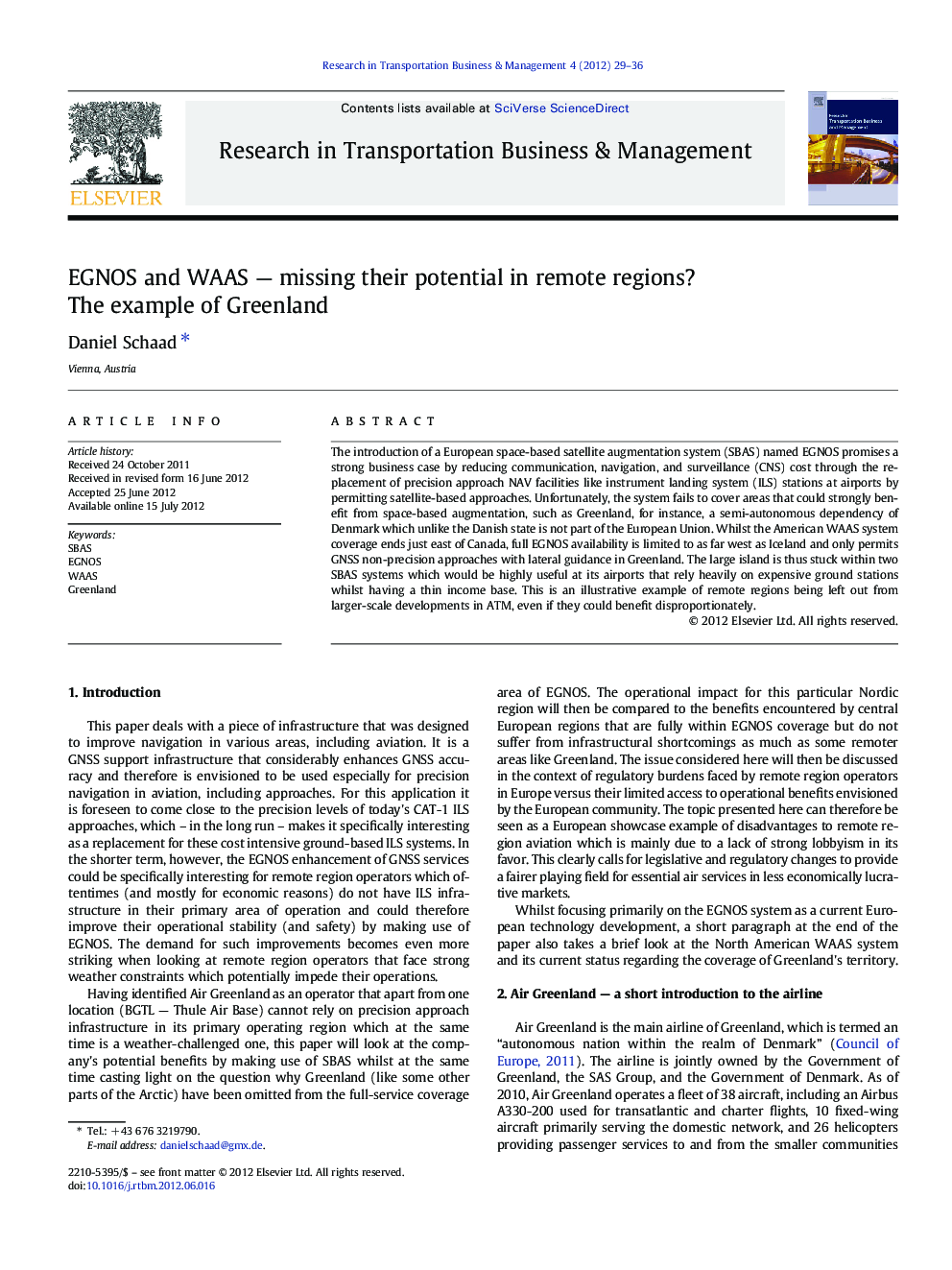| Article ID | Journal | Published Year | Pages | File Type |
|---|---|---|---|---|
| 1000845 | Research in Transportation Business & Management | 2012 | 8 Pages |
Abstract
The introduction of a European space-based satellite augmentation system (SBAS) named EGNOS promises a strong business case by reducing communication, navigation, and surveillance (CNS) cost through the replacement of precision approach NAV facilities like instrument landing system (ILS) stations at airports by permitting satellite-based approaches. Unfortunately, the system fails to cover areas that could strongly benefit from space-based augmentation, such as Greenland, for instance, a semi-autonomous dependency of Denmark which unlike the Danish state is not part of the European Union. Whilst the American WAAS system coverage ends just east of Canada, full EGNOS availability is limited to as far west as Iceland and only permits GNSS non-precision approaches with lateral guidance in Greenland. The large island is thus stuck within two SBAS systems which would be highly useful at its airports that rely heavily on expensive ground stations whilst having a thin income base. This is an illustrative example of remote regions being left out from larger-scale developments in ATM, even if they could benefit disproportionately.
Related Topics
Social Sciences and Humanities
Business, Management and Accounting
Business and International Management
Authors
Daniel Schaad,
